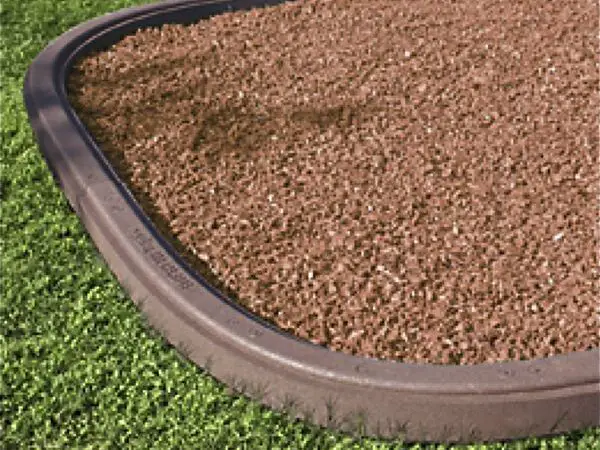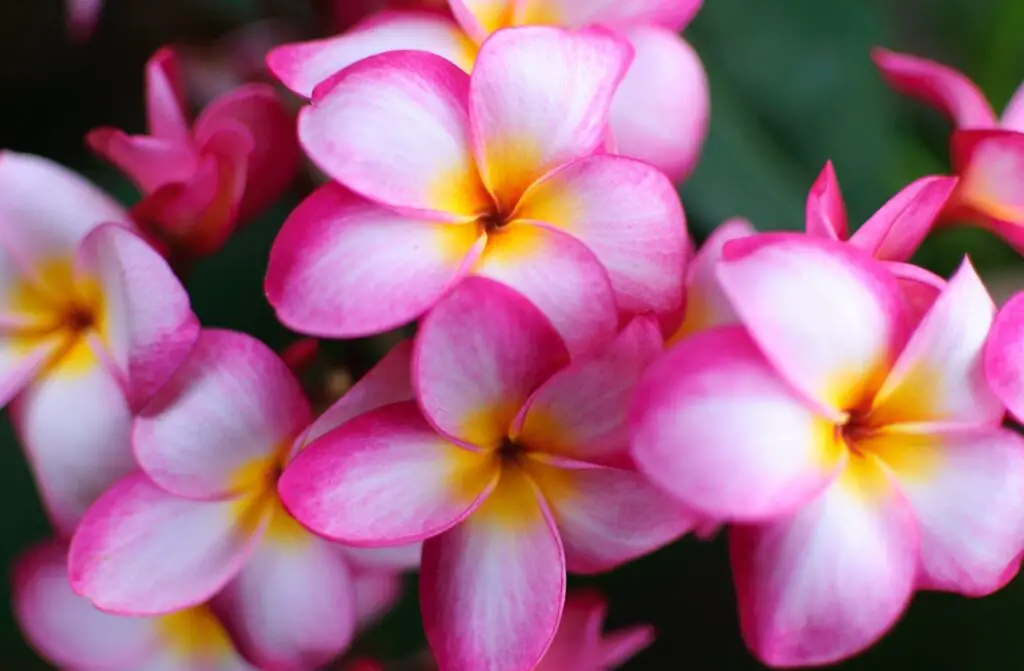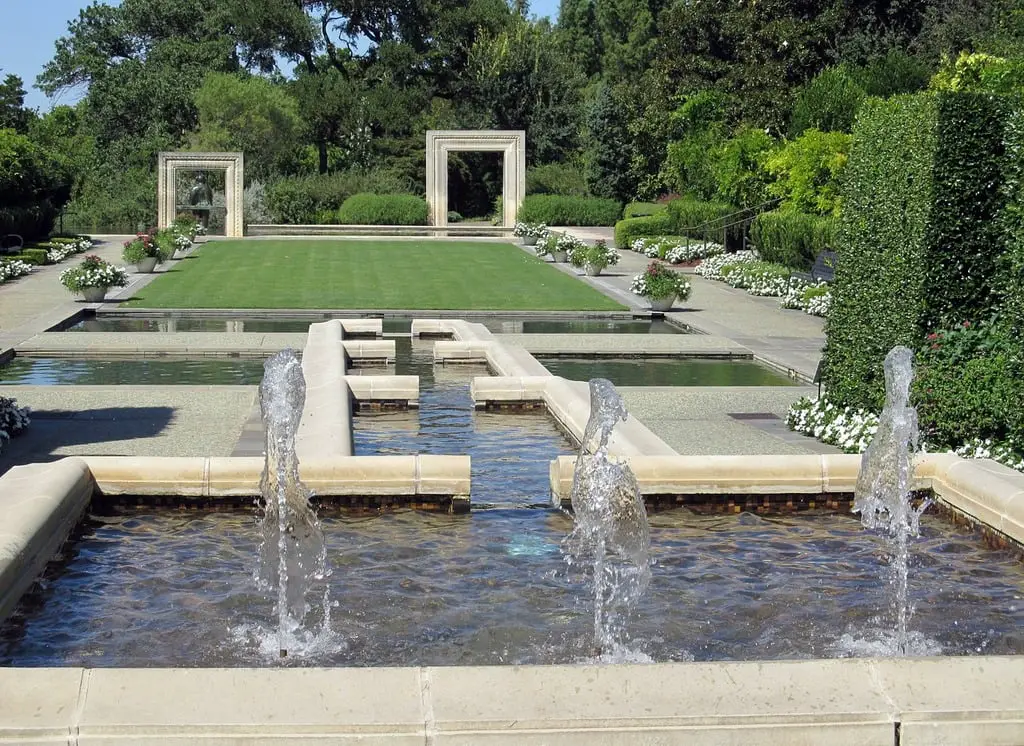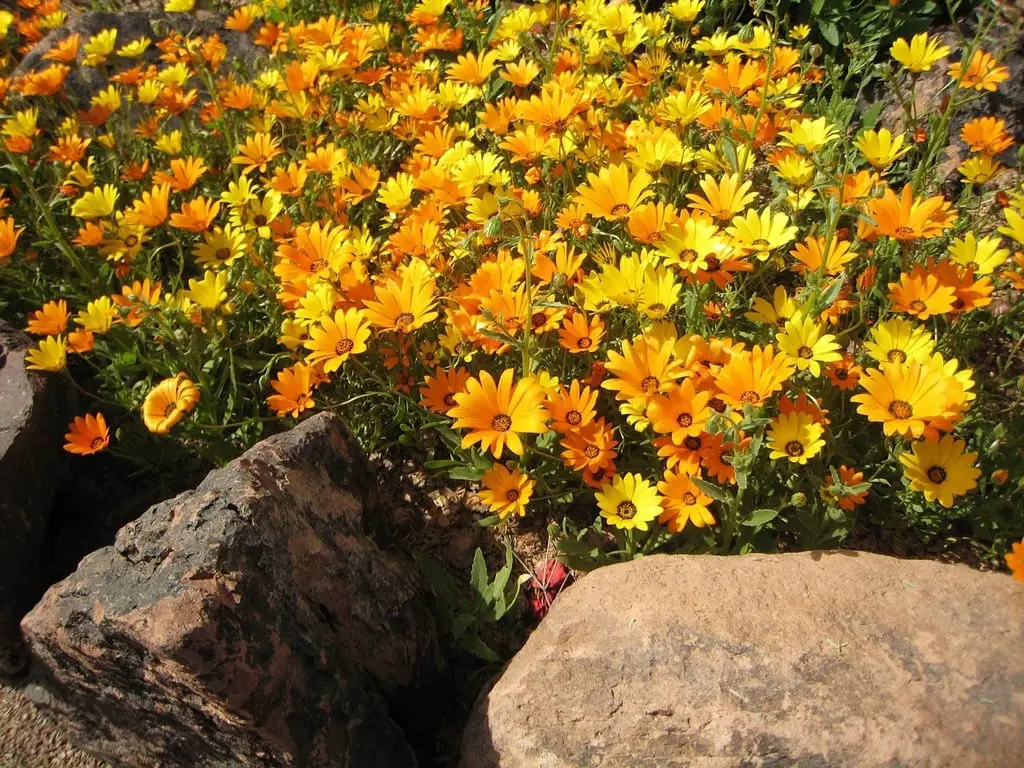1. Perfectly Manicured Lawns

The obsession with perfectly green, weed-free lawns dominated landscaping for decades, but by 2025, this trend has lost much of its appeal. Maintaining a flawless lawn often requires excessive watering, frequent mowing, and the use of chemical fertilizers and pesticides, all of which can harm the environment. Additionally, as water shortages become more common in many regions, the impracticality of high-maintenance lawns has become increasingly apparent.
According to the National Wildlife Federation, traditional turf grass provides little ecological value and does not support pollinators or other wildlife. As a result, many homeowners are replacing their lawns with native grasses, ground covers, or xeriscaping, which uses drought-resistant plants and rocks to create a low-maintenance, eco-friendly yard. This shift not only reduces water usage but also creates a more natural and biodiverse landscape.
2. Mulch Volcanoes Around Trees

For years, landscapers and homeowners piled mulch high around the bases of trees, creating what are now referred to as “mulch volcanoes.” This practice was thought to protect tree roots and improve aesthetics, but it actually causes more harm than good. Mulch volcanoes can trap moisture against the tree trunk, leading to rot, disease, and even death of the tree over time.
As explained by The Arbor Day Foundation, the proper way to apply mulch is to spread it evenly in a thin layer, keeping it several inches away from the tree’s trunk. This method allows the soil to retain moisture without suffocating the roots or damaging the tree. If your yard features mulch volcanoes, consider removing the excess mulch and redistributing it properly to promote tree health and longevity.
3. Overly Symmetrical Gardens

Symmetrical gardens with matching shrubs, flowers, and pathways were once the hallmark of a formal and elegant landscape. However, this rigid style has fallen out of favor as homeowners gravitate toward more natural, organic designs. Overly symmetrical gardens can feel artificial and lack the charm and character of less structured landscapes.
According to Better Homes & Gardens, asymmetrical designs that use a mix of textures, heights, and colors create a more dynamic and visually interesting yard. Naturalistic landscapes that mimic the randomness of nature are not only more appealing but also easier to maintain. If your garden feels overly formal, consider loosening up the design with varied plantings and irregular pathways to create a more inviting space.
4. Boxwood Hedges Everywhere

Boxwood hedges have long been a go-to choice for creating clean lines and defined borders in landscaping. However, their popularity has waned in recent years due to their susceptibility to disease, pests, and the overall high maintenance they require. Boxwood blight, a fungal disease that causes defoliation and dieback, has become a major issue in many regions, leading homeowners to seek alternatives.
As noted by The Spruce, native shrubs like holly, inkberry, or yew offer similar structure and visual appeal without the risks associated with boxwood. These plants are more resilient and often require less pruning, making them a practical choice for modern landscapes. If your yard relies heavily on boxwood hedges, consider replacing them with hardier, lower-maintenance options that can withstand local conditions.
5. Artificial Turf

Artificial turf gained popularity as a low-maintenance alternative to natural grass, but it has fallen out of favor due to its environmental drawbacks. While it eliminates the need for mowing and watering, artificial turf creates a heat island effect, increasing temperatures in the yard and surrounding areas. It also provides no habitat or food for wildlife and can break down over time, releasing microplastics into the environment.
According to The National Audubon Society, replacing artificial turf with native plants or drought-resistant ground covers is a more sustainable choice. These alternatives support pollinators, improve soil health, and reduce water usage without the downsides of synthetic materials. Homeowners looking to update their yards should prioritize eco-friendly landscaping that contributes to the local ecosystem.
6. Rock Gardens That Cover Entire Yards

Rock gardens were once seen as a stylish, low-maintenance solution for landscaping, especially in arid regions. However, covering an entire yard with gravel, pebbles, or large rocks is now considered outdated and environmentally unfriendly. While rock gardens reduce the need for watering, they can create heat islands by absorbing and radiating heat, making outdoor spaces uncomfortable. They also limit biodiversity, providing no habitat or nourishment for local wildlife.
According to The Xerces Society, incorporating native plants alongside rocks is a better approach to creating a sustainable and visually appealing landscape. Native grasses, wildflowers, and shrubs can thrive in dry climates while supporting pollinators and other beneficial insects. If your yard is dominated by rocks, consider adding clusters of native plants or replacing some of the rock coverage with drought-tolerant greenery to create a more balanced and eco-friendly design.
7. Overuse of Annual Flowers

Annual flowers, such as petunias and marigolds, have been a popular choice for adding seasonal color to gardens. However, relying too heavily on annuals is now seen as a wasteful and labor-intensive landscaping practice. Annuals require replanting every year, which can be costly and time-consuming, and they often demand more water and fertilizer than perennial plants.
As noted by Garden Design, perennial plants and native species are becoming the preferred choice for modern landscaping. Perennials return year after year, reducing the need for constant replanting, while native plants are better adapted to local climates and require less maintenance. To modernize your yard, consider replacing some of your annuals with a mix of perennials and native wildflowers, creating a landscape that is both beautiful and sustainable.
8. Plastic Edging

Plastic edging was once a popular way to create clean, defined borders in gardens and along pathways. However, it has fallen out of favor due to its artificial appearance, lack of durability, and environmental impact. Over time, plastic edging can crack, warp, or fade, detracting from the overall look of the landscape. Additionally, it often ends up in landfills once it’s removed, contributing to plastic waste.
According to The Spruce, natural materials like stone, brick, or metal are more durable and eco-friendly alternatives for garden edging. These materials blend seamlessly into the landscape and provide a timeless, polished look. If your yard features plastic edging, consider replacing it with a more sustainable option that will enhance the aesthetic and longevity of your garden design.
9. Excessive Use of Pavers

Paver patios and walkways have long been a staple of landscaping, offering a clean and uniform look. However, overusing pavers to cover large areas can create a stark, uninviting environment that lacks the warmth and texture of natural elements. Pavers can also contribute to stormwater runoff, as they prevent water from soaking into the ground, leading to drainage issues and erosion in some areas.
As highlighted by Better Homes & Gardens, homeowners are now opting for mixed-material designs that incorporate pavers alongside natural elements like gravel, mulch, or grass. Permeable pavers, which allow water to pass through, are also gaining popularity for their environmental benefits. To modernize your yard, consider breaking up large paver areas with green spaces or switching to permeable materials to improve both aesthetics and functionality.
10. Exotic, Non-Native Plants

Planting exotic, non-native species was once a popular way to create unique and eye-catching landscapes. However, these plants often require more water, fertilizer, and pest control than native species, making them less sustainable. In some cases, non-native plants can become invasive, disrupting local ecosystems and outcompeting native flora.
According to The National Wildlife Federation, native plants are better suited to local climates and provide essential food and shelter for wildlife. They also require less maintenance, making them an eco-friendly choice for modern landscaping. If your yard is filled with non-native plants, consider gradually replacing them with native species to create a more sustainable and wildlife-friendly environment.
11. Water Features That Waste Resources

Elaborate water features, such as fountains, waterfalls, and large koi ponds, were once a status symbol in landscaping. However, as water conservation becomes a priority in many regions, these features are now seen as wasteful and impractical. Water features often require continuous maintenance, electricity, and chemicals to stay clean and functional, making them expensive to operate.
As noted by HGTV, smaller, recirculating water features or rain gardens are more sustainable options for homeowners who want to incorporate water into their landscapes. These designs minimize water usage while still adding a soothing element to outdoor spaces. If your yard features a large, high-maintenance water feature, consider downsizing or replacing it with a more environmentally friendly alternative.
12. Monochromatic Gardens

Gardens that feature only one color scheme, such as all green or all white, were once considered chic and sophisticated. However, this trend is now viewed as overly simplistic and uninspiring. Monochromatic gardens lack the visual interest and biodiversity that come from mixing a variety of colors, textures, and plant types.
According to Garden Design, incorporating a mix of complementary colors and plant varieties creates a more dynamic and engaging landscape. Diverse plantings also support pollinators and other wildlife, making your yard both beautiful and beneficial to the environment. If your garden feels too monochromatic, consider adding pops of color through flowering plants, ornamental grasses, or seasonal accents to create a vibrant and welcoming outdoor space.
